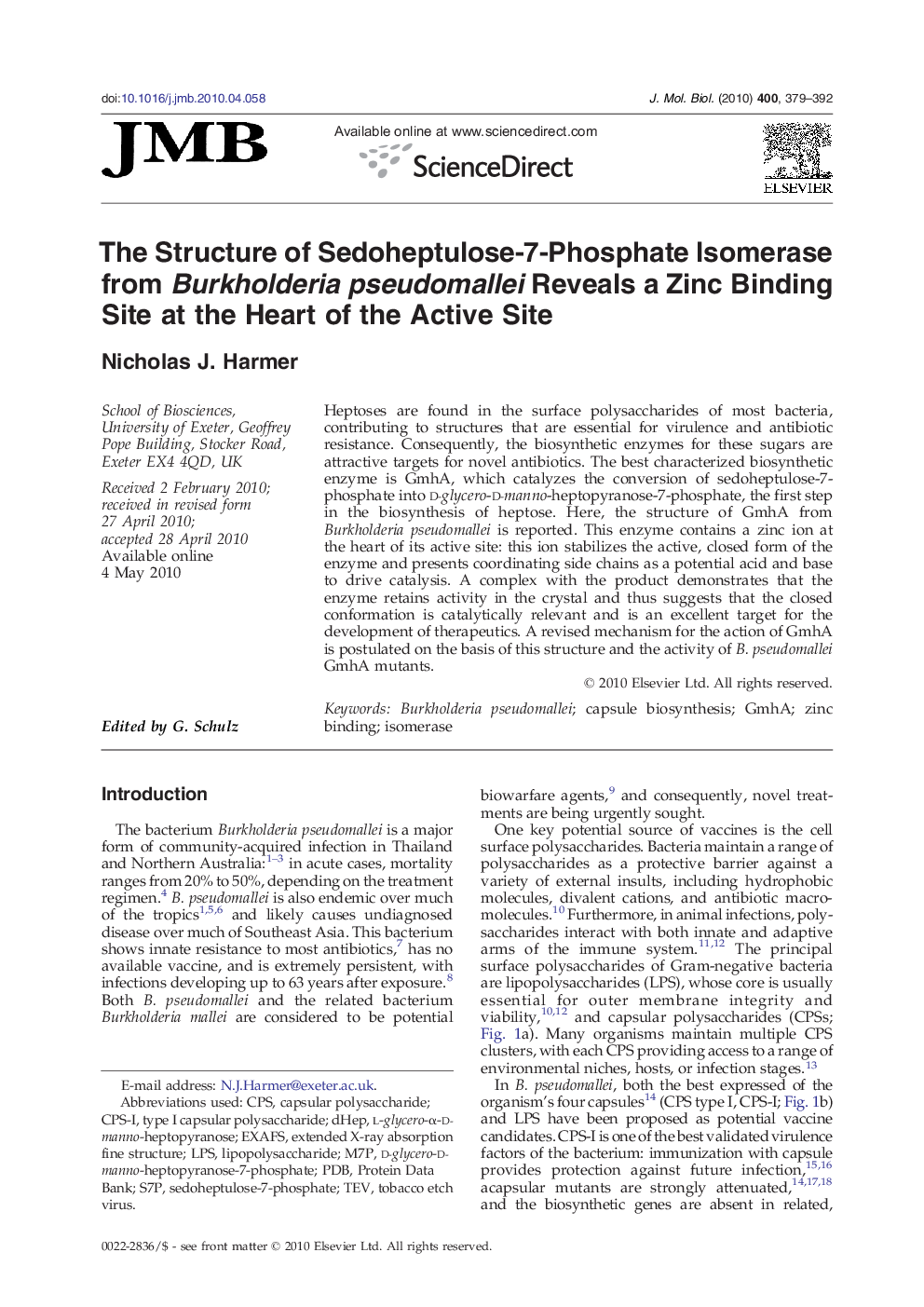| Article ID | Journal | Published Year | Pages | File Type |
|---|---|---|---|---|
| 2185821 | Journal of Molecular Biology | 2010 | 14 Pages |
Heptoses are found in the surface polysaccharides of most bacteria, contributing to structures that are essential for virulence and antibiotic resistance. Consequently, the biosynthetic enzymes for these sugars are attractive targets for novel antibiotics. The best characterized biosynthetic enzyme is GmhA, which catalyzes the conversion of sedoheptulose-7-phosphate into d-glycero-d-manno-heptopyranose-7-phosphate, the first step in the biosynthesis of heptose. Here, the structure of GmhA from Burkholderia pseudomallei is reported. This enzyme contains a zinc ion at the heart of its active site: this ion stabilizes the active, closed form of the enzyme and presents coordinating side chains as a potential acid and base to drive catalysis. A complex with the product demonstrates that the enzyme retains activity in the crystal and thus suggests that the closed conformation is catalytically relevant and is an excellent target for the development of therapeutics. A revised mechanism for the action of GmhA is postulated on the basis of this structure and the activity of B. pseudomallei GmhA mutants.
